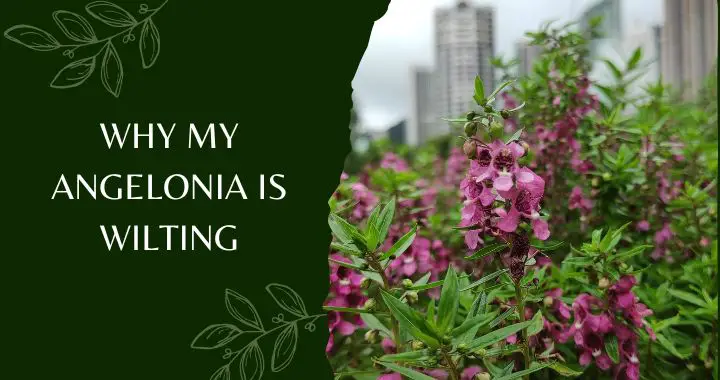Ice Plant Not Blooming? Here’s Why and How to Fix It!
Have you been eagerly waiting for your ice plant to burst into a profusion of vibrant blooms, only to be left disappointed by its lack of flowering? Don’t fret! In this comprehensive guide, we will dive into the multiple factors that can hinder ice plant blooming and provide you with detailed information on how to address each cause.
From insufficient sunlight to improper watering, nutrient imbalances, pruning predicaments, immaturity, lack of a chill period, overcrowding, environmental stress, and genetic factors, we will explore them all.
Let’s unravel the mystery behind your ice plant’s non-blooming state and unlock its true flowering potential!
What's On the Page
Unveiling the Causes Behind Ice Plants Not Blooming
To solve the mystery of your ice plant’s missing blooms, let’s uncover some common culprits:
Insufficient Sunlight
Ice plants adore the sun! They thrive in full sunlight and require at least six hours of direct exposure each day. Lack of sunlight can hamper blooming, so ensure your ice plant is basking in plenty of sunshine.
Improper Watering Practices
Overwatering is a notorious foe of ice plants. These resilient succulents prefer drier conditions, so be careful not to drown them in excessive moisture. Ensure your ice plant is potted in well-draining soil and water it sparingly, allowing the soil to dry out between waterings.
Nutrient Imbalance
Ice plants, like any other living organism, need proper nourishment to bloom to their full potential. A lack of essential nutrients, particularly phosphorus, can hinder flower production. Consider using a balanced fertilizer specifically formulated for succulents to provide the necessary nutrients.
Pruning Predicament
Pruning is crucial for maintaining the health and shape of your ice plant. However, if done incorrectly or at the wrong time, pruning can disrupt the blooming cycle. Make sure you learn proper pruning techniques and timing to avoid removing flower buds unintentionally.
Environmental Factors
Apart from the specific care aspects discussed above, certain environmental factors can also impact ice plant blooming. it may struggle to bloom in excessively hot or cold environments. Provide adequate protection during extreme weather conditions.
Pests and Diseases
Infestations or diseases can weaken the plant and hinder blooming. Monitor your ice plant for signs of pests or diseases and take appropriate measures to address them.
Immaturity
Ice plants often take some time to reach maturity before they can produce blooms. If your ice plant is relatively young or recently transplanted, it may need more time to establish its root system and develop the energy reserves necessary for blooming. Be patient and give it time to grow.
Lack of Chill Period
Some ice plant varieties require a period of cold dormancy, known as a chill period, to stimulate blooming. If you live in a region with mild winters or your ice plant is grown indoors, it may not be receiving the necessary chill hours.
Overcrowding
If your ice plant is growing in a crowded area or container, it may not have enough space to spread its roots and allocate energy for blooming. Consider thinning out overcrowded areas or repotting the plant into a larger container to provide ample room for growth and blooming.
Genetic Factors
It’s worth noting that certain ice plant varieties may naturally have a lower propensity for blooming compared to others. If you have tried all the recommended care practices and your ice plant still doesn’t bloom, it could be a genetic trait of the specific variety.
Practical Solutions For Ice Plants Not Blooming
Now that we’ve uncovered the reasons behind non-blooming ice plants, let’s explore some practical solutions to revive the blooms:
Embrace Sunshine
Find the sunniest spot for your ice plant, ensuring it receives a minimum of six hours of direct sunlight per day. Consider relocating it to a brighter area if needed. Consider the following:
Ensure your ice plant is exposed to at least six hours of direct sunlight each day.
Evaluate its current location and, if needed, move it to a spot that receives ample sunlight.
Avoid placing the ice plant in areas with obstructions or heavy shade.
Water with Caution
Adjust your watering routine to prevent overwatering. Allow the soil to dry out between waterings, and use a well-draining soil mix to avoid waterlogged roots. Consider the following watering practices:
Provide water sparingly, allowing the soil to dry out between waterings.
Use a well-draining soil mix to prevent water from accumulating around the roots.
Avoid waterlogging, as excessive moisture can lead to root rot and hinder blooming.
Nourish for Success
Feed your ice plant with a succulent-friendly fertilizer during the growing season. Look for a product with higher phosphorus content to promote abundant flower production
Consider the following steps to address this issue:
Use a balanced, slow-release fertilizer formulated for succulents.
Select a fertilizer with higher phosphorus content to encourage flower development.
Follow the recommended application rates and schedules provided by the fertilizer manufacturer.
Prune with Care
Master the art of pruning to enhance the health and blooming potential of your ice plant. Avoid pruning during the blooming season and be mindful not to remove developing buds unintentionally.
The patient Must
Be patient and give your ice plant time to reach maturity. Young plants may take a year or more to establish themselves before they can produce blooms.
Ensure that your ice plant receives proper care, including adequate sunlight, appropriate watering, and nutrient supplementation, to support healthy growth and development.
Place the Plant Cooler Location
If your ice plant requires a chill period, simulate it by placing the plant in a cooler location for a few weeks during the winter months.
Ensure that the temperature remains between 35-45°F (1-7°C) during this simulated chill period.
Resume regular care and provide optimal growing conditions after the chill period to encourage blooming.
Do Repotting
Thin out overcrowded areas in your garden or consider repotting the ice plant into a larger container to provide sufficient space for root expansion and energy allocation towards blooming.
When transplanting, use well-draining soil and ensure the new container has adequate drainage to prevent waterlogging.
Try Alternative Varieties
If your ice plant variety naturally has a lower blooming propensity, consider trying alternative ice plant varieties known for their prolific blooming habits.
Research and select ice plant cultivars that are specifically bred for abundant blooms in your particular climate.
Frequently Asked Questions(FAQs)
How much sunlight does an ice plant need to bloom?
A: Ice plants require at least six hours of direct sunlight each day to trigger the blooming process. Ensure that your ice plant is placed in a spot that receives ample sunlight and is not shaded by obstructions.
How should I water my ice plant to promote blooming?
A: Water your ice plant sparingly, allowing the soil to dry out between waterings. Overwatering can hinder blooming, so it’s crucial to use a well-draining soil mix and avoid waterlogging.
Do ice plants need any specific nutrients to bloom?
A: Ice plants benefit from a balanced, slow-release fertilizer formulated for succulents. Select a fertilizer with higher phosphorus content to encourage flower development. Follow the recommended application rates and schedules provided by the fertilizer manufacturer.
When is the best time to prune an ice plant for optimal blooming?
A: It’s important to prune an ice plant correctly and at the appropriate time. Avoid pruning during the blooming season, as this can remove developing flower buds. Learn the proper pruning techniques and timing for your specific ice plant variety to avoid unintentionally removing potential blooms.
Conclusion
With the tips and solutions outlined above, you’re now armed with the knowledge to revive your ice plant’s blooming glory. Remember to provide ample sunlight, and water wisely, nourish with the right fertilizer, and prune with care. In no time, you’ll witness your ice plant’s mesmerizing transformation as it bursts forth with a kaleidoscope of colorful flowers, breathing new life into your garden and bringing you joy throughout the seasons.
Now, armed with this knowledge, go forth and revive your ice plant’s blooming potential. Enjoy the process, and may your garden be adorned with an abundance of colorful ice-plant flowers. Happy gardening!


